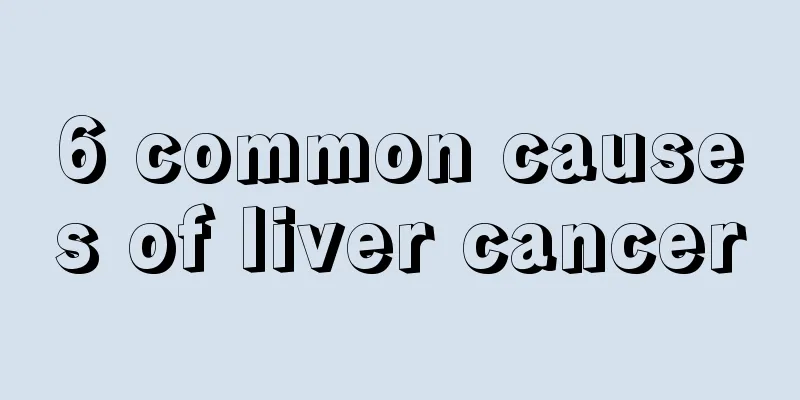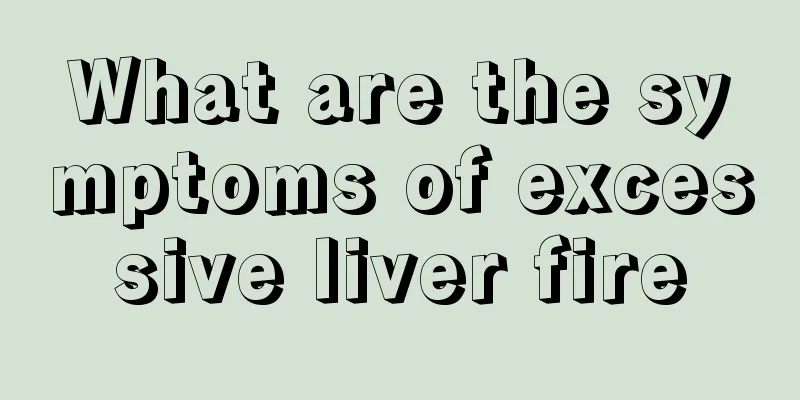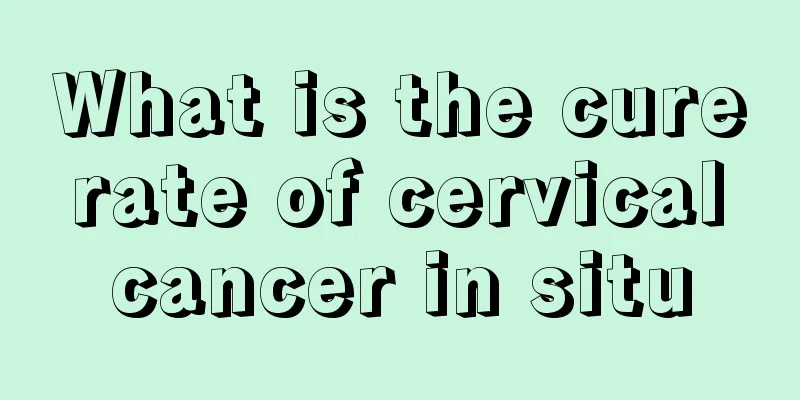What are the symptoms of cervical precancerous lesions? How to treat cervical precancerous lesions symptomatically?

|
What are cervical precancerous lesions? Cervical precancerous lesions refer to cancerous lesions caused by lesions in the area before cancer occurs. Cervical precancerous lesions are atypical hyperplasia of the cervix. The occurrence and development of cervical cancer has a gradual evolution process, which can take from a few years to decades. It is generally believed that this evolution process has gone through several stages: hyperplasia, atypical hyperplasia, carcinoma in situ, early invasion and invasive cancer. What are the signs of cervical precancer? 1. In the early stages, cervical cancer is limited to the cervix, patients often have no symptoms, and it does not spread to other surrounding tissues. 2. The early symptoms of cervical cancer are usually a small amount of bleeding after sexual intercourse, irregular menstruation or vaginal bleeding after menopause. At this time, a gynecological examination will find that the surface of the cervix is smooth or eroded, hard, and easy to bleed. 3. As the disease progresses and the tumors gradually increase, the patient's vaginal discharge increases. If the cancerous tissue is necrotic and infected, more foul-smelling vaginal discharge mixed with blood will be discharged; the late-stage symptoms of cervical cancer increase the amount of bleeding, and even fatal bleeding due to erosion of large blood vessels. Local tumors can be nodular or ulcerated, and the tumor becomes hollow after necrosis and shedding. What are the treatments for cervical precancerous lesions? The commonly used treatment for CIN is: 1.33%~50% trichloroacetic acid is used for local drug treatment once a week. For CINⅠ and combined with HPV infection. Trichloroacetic acid has low toxicity and does not damage the surrounding skin. There is no scar after the lesion is repaired. 2. There are many reports on electrocoagulation treatment abroad, saying that the advantages of using electrocoagulation to treat CIN are wide treatment area, depth of 3~5mm, and efficacy of 90%~95%. However, electrocoagulation should not be too deep, otherwise it will cause pain and postoperative bleeding. 3. The efficacy of cryotherapy is similar to that of electrocoagulation and is generally used for small lesions confined to the cervical surface and CIN Ⅰ-Ⅱ. It is rarely used now. 4. Laser and microwave treatments The literature reports that the cure rate is 76% to 98% in one treatment. Both methods have the advantages of simple operation, accurate treatment, rapid tissue healing, and few complications, and have made great progress in recent years. CIN I to II. The disadvantage is that the lesion tissue is destroyed and tissue specimens cannot be obtained. 5. Cervical conization is a traditional treatment method commonly used at home and abroad. It can be selected for young and infertile women with carcinoma in situ, and hysterectomy can be performed after delivery. In addition, conization can also be used for CINⅢ with limited lesions, refusal or intolerance of surgery. The excision range includes abnormal lesions under colposcopy, the entire transformation zone and the lower part of the cervical canal. The excision width is 0.5 cm and the depth is generally 2.0 cm. 6. Radical hysterectomy is the most commonly used and most thorough treatment for CIN III carcinoma in situ for those who do not want to have children and middle-aged and elderly people. It is also the priority treatment for CIN III patients. 7. LEEp: LEEp was first used in China by French scholar Cartier (1981) in the late 1990s. Compared with laser, microwave and cone cutting, LEEp has the advantages of quick and simple operation, few complications and low price. While removing the lesion, the tissue specimen is completely preserved, which has the dual role of diagnosis and treatment. The Colposcopy and Cervical Pathology Association stipulates that LEEp can be widely used to evaluate and manage various precancerous lesions of the cervix and lower reproductive tract. LEEp application indicators: 1. Inconsistency between the results of cervical cytology, colposcopy and cervical biopsy; 2. CINⅠ~Ⅲ can be treated with LEEp; 3. The indications for cervical conization are also applicable to LEEp; 4. For small lesions, LEEp treatment is equivalent to biopsy. Disadvantages and complications of LEEp: 1. Improper operation may cause specimen rupture; 2. Thermal stimulation may cause pain; 3. Bleeding, infection, cervical adhesion, etc.; 4. Some patients may suffer from late miscarriage, premature birth, etc. Regardless of the treatment method used, follow-up after CIN treatment is very important for patients. Follow-up is cytology, colposcopy and necessary tissue diagnosis. After negative treatment of CINⅠ, follow-up is once a year. CINⅡ~CINⅢ is followed up every 3~6 months, and after 2 years of continuous negative, it is followed up every 6 months in the third year, and once a year after 5 years of continuous negative. Recommended articles on tumors [Directly hit tumors 01] Lymphoma is common, experts recommend 3 ways to stay away from lymphoma [Directly hit tumor 02] Too much nutrition makes pancreatic cancer more likely to fall in love with rich people 【Directly hit tumor 03】Malignant tumor ranks first. The key to preventing lung cancer is to control smoking People with 4 body types are more likely to get cancer. Cancer prevention should find a suitable diet Three foods that can help prevent pancreatic cancer: Regular consumption of processed meat or pancreatic cancer |
Recommend
How much does prostate cancer screening cost
How much does prostate cancer screening cost? Pro...
What to do if you sprain your wrist
In daily life, wrist sprains often occur. Sometim...
How do you train a muscular man
Nowadays, people's aesthetic tastes tend to f...
Indications and contraindications for radiotherapy of cervical cancer
Cervical cancer is relatively sensitive to radiot...
What are the symptoms of hyaluronic acid allergy?
Hyaluronic acid generally does not cause allergie...
Acne on the chin is caused by the spleen and stomach
In life, many people get acne on their faces. In ...
What are the precautions for using hypothermia therapy device?
I call the hypothermia therapy device a cooling b...
What should I do if my face becomes red, swollen and allergic?
Facial redness, swelling and allergies are condit...
What are the traditional Chinese medicine formulas for esophageal cancer
Esophageal cancer is a very serious cancer that c...
My teeth became sore after using the teeth whitening device
Teeth whitening devices are mainly used to whiten...
Will wind-heat cold and wind-cold cause fever
Will wind-heat cold and wind-cold cause fever? Wh...
What should I do if I have a decrease in platelets?
Nowadays, thrombocytopenia has become a relativel...
The feeling of choking when eating is not necessarily esophageal cancer
Aunt Zhang is 48 years old this year. She is in m...
What to do if you have a sore throat due to inflammation
Getting a sore throat due to heat is a very commo...
Should I apply sunscreen or foundation first?
Sunscreen and liquid foundation are both cosmetic...









